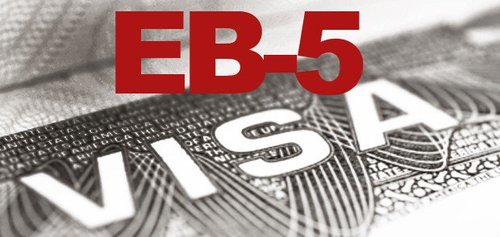
EB-5: The Visa For Chintzy Capitalists
By Paul Nachman
08/23/2015
In his current VDARE.com article, Federale makes reference to the EB-5 "investor’s" visa, a subject that has received repeated attention here over the years. In the EB-5 program, a foreign investor puts at least $500,000 into some U.S. activity that’s supposed to create or preserve at least 10 full-time jobs for at least two years; in return, the investor and dependents gain temporary legal U.S. residency that can be turned into "green cards" (i.e. permanent legal residency) all-around after those two years. (And if the investment has at least broken even, the money can then be reclaimed.)
The EB-5 program’s many features and flaws are covered thoroughly in a January 2012 paper, The Immigrant Investor (EB-5) Visa: A Program that Is, and Deserves to Be, Failing [PDF], by Center for Immigration Studies [CIS] graybeard (white beard, actually!) David North. He sets the stage in a manner that should suffice to deflate the kind of panting, grandiose claims that innumerate politicians routinely make about immigration’s putative economic benefits to the U.S.:
Foreign investment comes to the United States routinely, in large volume, with minuscule help from EB-5. In 2010, total foreign investment in the United States increased by $1.9 trillion, according to the U.S. Department of Commerce. My estimate (based on the investors’ green card applications filed two years after the first investment) is that EB-5 investment that year was about $191 million, and that was a well-above-average year for the program. So, for every $100 of increased foreign investment that year, the EB-5 program contributed about one penny.[Emphases in original]
North makes clear that the EB-5 program rarely involves truly entrepreneurial activity on the part of the foreign investors. (Nor is it necessarily a good economic deal for these investors; some are victims of scams, as North routinely documents in his CIS blog posts.)
I wrote "at least $500,000" above, but as North further explains:
For something like 90 percent of the applicants, the amount of investment is $500,000, and the period of investment need be no more than 24 months as far as the government is concerned, though sometimes investors have trouble, in fact, withdrawing their investment that quickly.The investment must be just that, not a loan. It must be an at-risk arrangement, and it must be made in the private sector. It must be made by the investor, and not by a corporation, for instance, owned or controlled by the investor. The money must also be legally acquired; it cannot be the loot of a drug lord. It must create or save (no matter how calculated) 10 jobs for legal resident workers other than members of the investor’s family.
Let’s focus on that $500,000 "investment." Can that be a significant creator of jobs? Good jobs, even for just two years?
In a calculation even most politicians could follow, dividing $500,000 by 10 jobs yields $50,000 per job. Meanwhile, here are values of "capital investment per job" for 2013 across major sectors of the U.S. economy, taken from page 18 of the Ernst & Young 2014 U.S. Investment Monitor: Tracking mobile capital investments during 2013 [PDF]:
Financial and professional services $86,000Trade and transport $169,000
Durable manufacturing $257,000
Information $331,000
Non-durable manufacturing (not including chemical) $375,000
Agriculture, mining, construction $457,000
Chemical and petrochemical manufacturing $4,301,000
So $50,000 per job associated with the EB-5 program is off the bottom of the scale above. These are unlikely to be desirable jobs.
Thus when the EB-5 program works out at its best, we're trading the precious commodity of U.S. permanent legal residency (encompassing the investor’s whole family) for an investment that yields 10 lousy jobs for a couple of years — consistent with my longstanding assertion that nearly every aspect of our present immigration arrangements amounts to a victimization of us native-born citizens. In the case of EB-5 visas the victimization is by — in Steve Sailer’s term — "diluting the scarcity value of [legal] U.S. residency."
